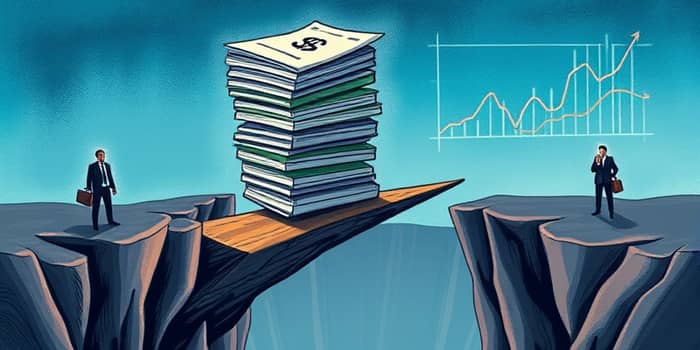
Loan stacking is more than a borrowing tactic—it can be a glaring sign that an individual or business is on the brink of financial collapse. By understanding its causes, risks, and red flags, stakeholders can act swiftly to mitigate damage and craft healthier financing strategies.
Loan stacking occurs when borrowers rapidly secure multiple loans from different lenders, often without disclosing existing debts. Unlike traditional credit usage, which unfolds over time, stacking focuses on both the speed of application and the layering of new obligations.
Lenders and brokers in the online finance ecosystem can inadvertently encourage this behavior by offering fast approvals and minimal transparency. Borrowers in urgent need of capital, whether to cover payroll, seize a fleeting opportunity, or patch cash flow gaps, may find themselves trapped by mounting debts they never intended to sustain.
While tempting as a short-term solution, stacking opens the door to severe pitfalls:
Empirical data underscores the gravity of stacking’s consequences. Tracking these metrics helps lenders and analysts spot distress early:
The rapid accumulation of new loans is a critical early warning signal for distress. When borrowers layer short-term credit, it often reflects underlying cash flow shortfalls or an inability to align revenue with obligations.
Lenders and investors should deploy automated alerts for repeated applications within narrow timeframes. Monitoring bank deposits, outgoing loan payments, and credit bureau inquiries together forms a composite picture of risk.
By integrating data-driven detection and monitoring tools, financial institutions can flag high-risk accounts and engage borrowers before defaults occur. Early outreach may involve restructuring, payment deferrals, or referrals to counseling services.
In response to the stacking challenge, regulators and market participants are tightening protocols.
Such measures aim to safeguard both lenders and borrowers from spiraling financial harm, preserving the integrity of credit markets.
Rather than succumbing to predatory stacking, borrowers and lenders can embrace healthier practices:
These strategies reduce reliance on high-cost credit and promote sustainable financial recovery.
Loan stacking need not be an inevitability. By recognizing early warning signs—like overlapping loan payment dates or sudden spikes in credit inquiries—participants can intervene before distress becomes irreversible.
Adopting a culture of open dialogue, robust analytics, and flexible servicing options empowers borrowers to seek help and lenders to offer tailored solutions. In doing so, the market shifts from reactive crisis management to proactive financial stewardship.
Tracking loan stacking provides a window into the health of borrowers’ finances. As an indicator of distress, it demands attention from lenders, investors, and policy-makers alike. By combining vigilant monitoring with compassionate intervention, the industry can transform stacking from a symptom of despair into a catalyst for positive, sustainable change.
References













